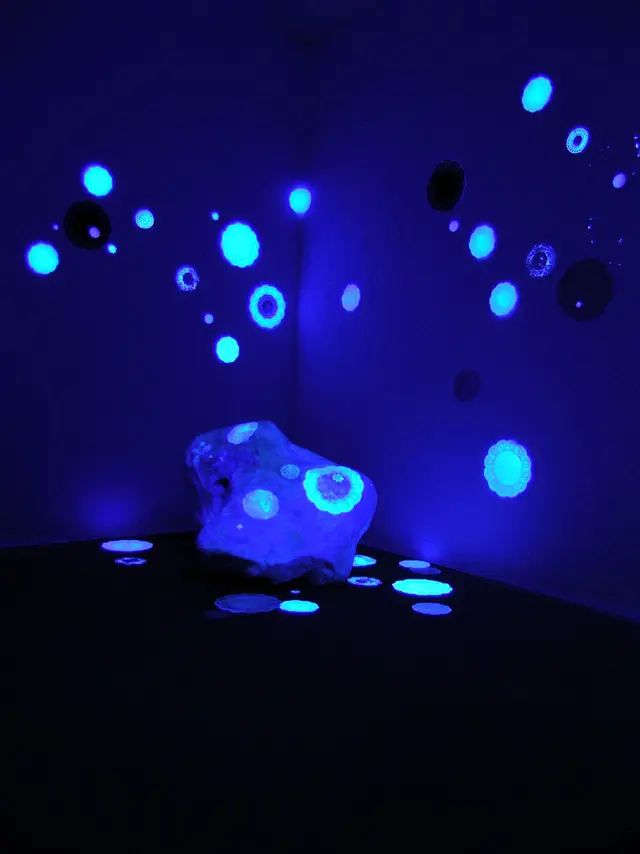“You seem so settled for one that doesn't belong”
Penelope Aitken
20 Feb → 14 Mar 2009

Melbourne artist Penelope Aitken makes paintings and installations thematically driven by relationships including friendships, romantic liaisons, genealogy and cross-cultural exchange. She is also inclined to anthropomorphise the natural world.
Glacial erratics and other outlandish propositions
by Penelope Aitken
Rocks are generally regarded as solid and permanent but I've come to consider them as shifting, mutable things. A rock has stories of travel and adventure etched onto its surface and in its very being. Sit still for long enough and it may tell you this:
Once upon a time, about ten thousand years ago, the earth emerged from the last Ice Age. In geological terms, ten thousand years is but an eye blink, though in human terms much has changed. Then, the human population was less than one million hunter-gatherers, living in Australia and other equatorial regions such as a lush and verdant Sahara. Meanwhile most of the earth, especially the north, had spent the last hundred thousand years or more hibernating under snow and ice. As the land slowly warmed, the glaciers melted leaving behind scars on the bedrock made by the grinding rasp of pack ice. Also debris, carried hundreds of miles on top of the glaciers, sank to the ground. Included in this cargo were rocks and boulders now called ‘glacial erratics’ because of their marked distinction in morphology from the bedrock below.
Many of these rocks were too large to move and rest where they first fell. Others have been moved many times since, and used in buildings and ballast, gardens and graves.
While visiting the New England region of the United States last year I explored the uses people make of rocks and boulders in that long-settled and extensively rocky landscape. There the land is scattered with glacial erratics: the largest of these disrupting the rolling green fields and gardens, and the smaller ones used in the network of rock walls that lace the landscape.
The geological phenomenon of glacial erratics adds another dimension to my interest in the movement of rocks for cultural reasons.
Since undertaking a residency in 2007 in Eltham, at the former property of landscape designer, Gordon Ford, I have been making paintings that depict Ford’s use of rocks. From the late 1950s until the 1990s Ford constructed gardens that embodied an idealised version of nature that both reflected and shaped the aesthetic of Eltham as an anti-suburban, bush environment. Ironically Ford’s preferred rock was basalt, a product of volcanos, which he obtained from farms in the north and west of Victoria in order to create his ‘indigenous’ gardens in the east.
In this installation, You seem so settled for one that doesn’t belong, a large glowing boulder-like object sits adjacent to paintings of other alien rocks. I imagine these moved rocks as immigrants or travellers that have carried the culture and traditions other times and places.




Penelope Aitken